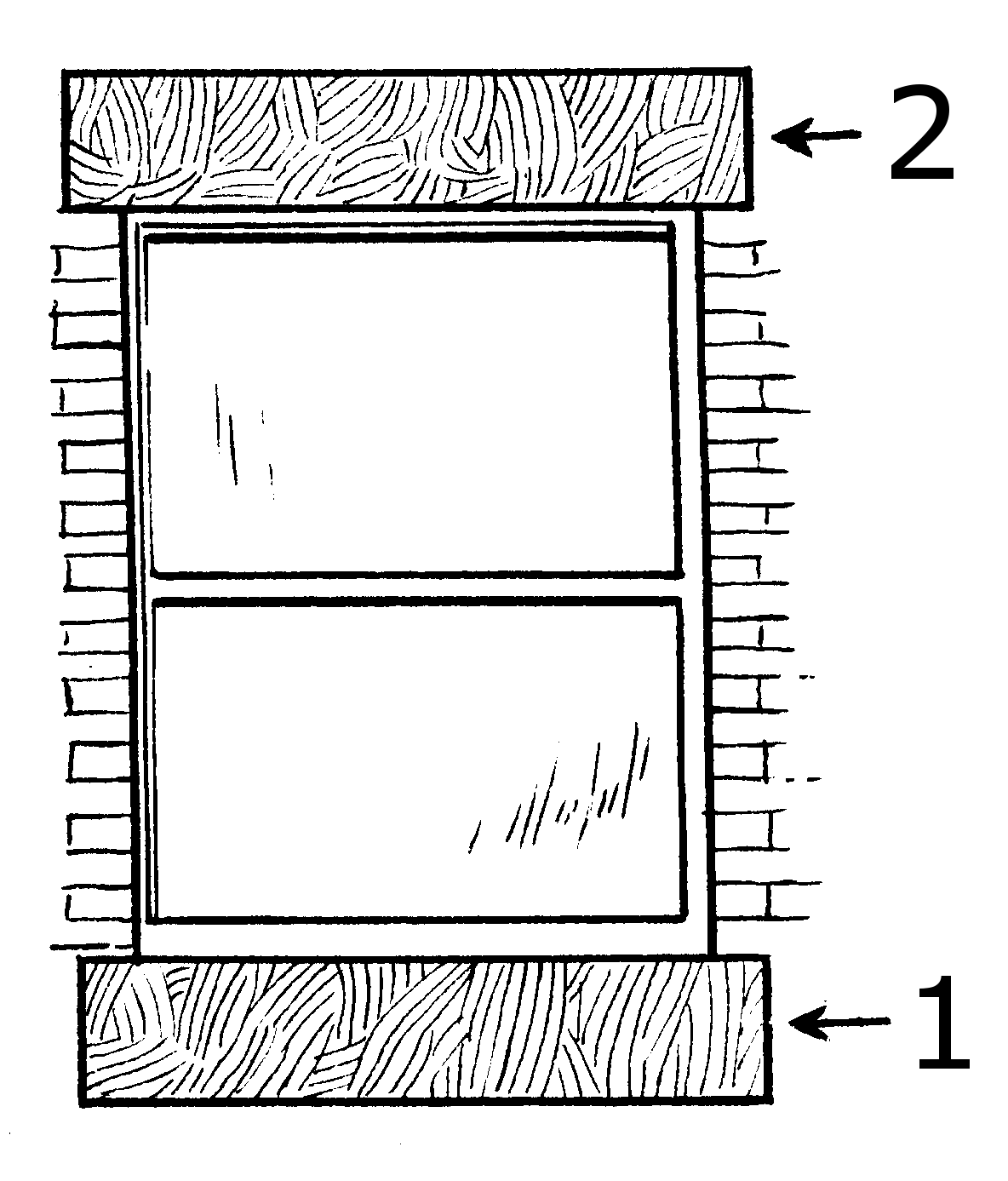Windowsill on:
[Wikipedia]
[Google]
[Amazon]

 A windowsill (also written window sill or window-sill, and less frequently in
A windowsill (also written window sill or window-sill, and less frequently in

British English
British English (BrE, en-GB, or BE) is, according to Lexico, Oxford Dictionaries, "English language, English as used in Great Britain, as distinct from that used elsewhere". More narrowly, it can refer specifically to the English language in ...
, cill) is the horizontal structure or surface at the bottom of a window
A window is an opening in a wall, door, roof, or vehicle that allows the exchange of light and may also allow the passage of sound and sometimes air. Modern windows are usually glazed or covered in some other transparent or translucent materia ...
. Window sills serve to structurally support and hold the window in place.
The exterior portion of a window sill provides a mechanism for shedding rainwater away from the wall at the window opening. Therefore, window sills are usually inclined slightly downward away from the window and wall, and often extend past the exterior face of the wall, so the water will drip off rather than run down the wall.
Some windowsills are made of natural stone
This is a geographical list of natural stone used for decorative purposes in construction and monumental sculpture produced in various countries.
The dimension-stone industry classifies stone based on appearance and hardness as either "granit ...
, cast stone
Cast stone or reconstructed stone is a highly refined building material, a form of precast concrete used as masonry intended to simulate natural-cut stone. It is used for architectural features: trim, or ornament; facing buildings or other st ...
, concrete
Concrete is a composite material composed of fine and coarse aggregate bonded together with a fluid cement (cement paste) that hardens (cures) over time. Concrete is the second-most-used substance in the world after water, and is the most wi ...
, tile
Tiles are usually thin, square or rectangular coverings manufactured from hard-wearing material such as ceramic, stone, metal, baked clay, or even glass. They are generally fixed in place in an array to cover roofs, floors, walls, edges, or o ...
, or other non-porous
Porosity or void fraction is a measure of the void (i.e. "empty") spaces in a material, and is a fraction of the volume of voids over the total volume, between 0 and 1, or as a percentage between 0% and 100%. Strictly speaking, some tests measure ...
materials to further increase their water resistance.
Windows may not have a structural sill or the sill may not be sufficiently weather resistant. In these cases, a strip of waterproof and weather resistant material (steel
Steel is an alloy made up of iron with added carbon to improve its strength and fracture resistance compared to other forms of iron. Many other elements may be present or added. Stainless steels that are corrosion- and oxidation-resistant ty ...
, vinyl
Vinyl may refer to:
Chemistry
* Polyvinyl chloride (PVC), a particular vinyl polymer
* Vinyl cation, a type of carbocation
* Vinyl group, a broad class of organic molecules in chemistry
* Vinyl polymer, a group of polymers derived from vinyl m ...
, PVC) called a sill pan may be used to protect the wall and shed the water. Like the sill, a sill pan will usually be inclined and protrude from the wall.
Types of window sill
A window sill in the most general sense is a horizontal structural element below a window opening or window unit inmasonry
Masonry is the building of structures from individual units, which are often laid in and bound together by mortar; the term ''masonry'' can also refer to the units themselves. The common materials of masonry construction are bricks, building ...
construction or framed construction and is regarded as part of the window frame. The bottom of a window frame sits on top of the window sill of the wall opening.
A window sill may span the entire width of a wall from inside to outside, as is often the case in basic masonry construction, making it visible on both the interior and exterior of the building. In such a case the exterior window sill and interior window sill would be two sides of the same structural element.
Conversely, a window sill may only extend from the internal wall structure to the outside and not be visible from the building's interior. In that case the window likely has a shelf-like piece of interior trim work—often made of wood, tile, or stone—which is distinct from the exterior window sill. The technical term used by carpenters
Carpentry is a skilled trade and a craft in which the primary work performed is the cutting, shaping and installation of building materials during the construction of buildings, ships, timber bridges, concrete formwork, etc. Carpenters t ...
, window manufacturers, and other professionals for this piece of trim work is window stool, but it is also referred to as a window sill. In residential buildings, some people use this latter kind of interior window sill or stool to store houseplants, books, or other small personal items.
See also
* Window § Terms *Window box
A window box (sometimes called a window flower box or window box planter) is a type of flower container for live flowers or plants in the form of a box attached on or just below the sill of a window. It may also be used for growing herbs or othe ...
References
Windows Architectural elements {{architecture-stub